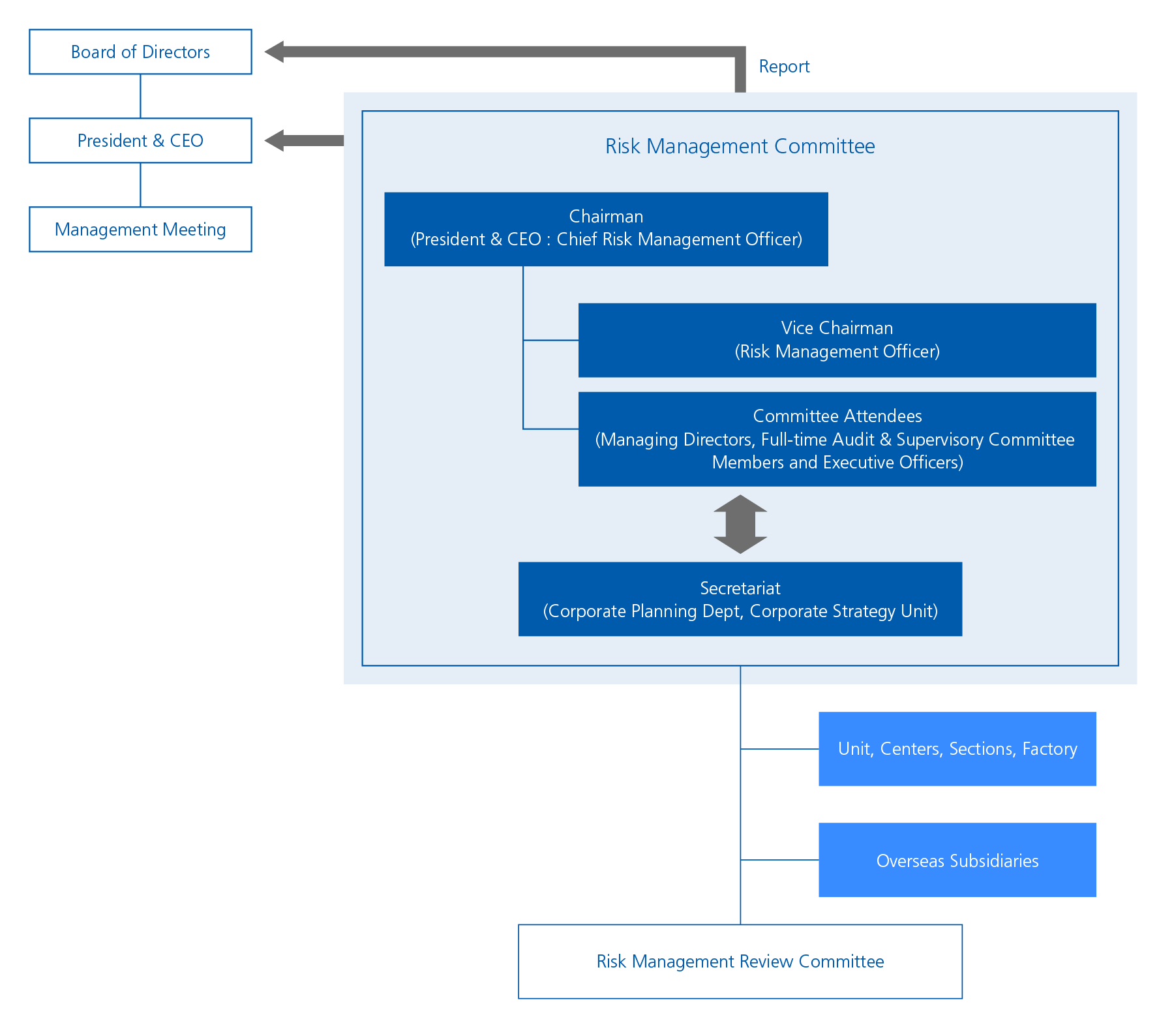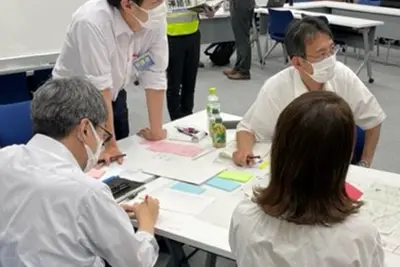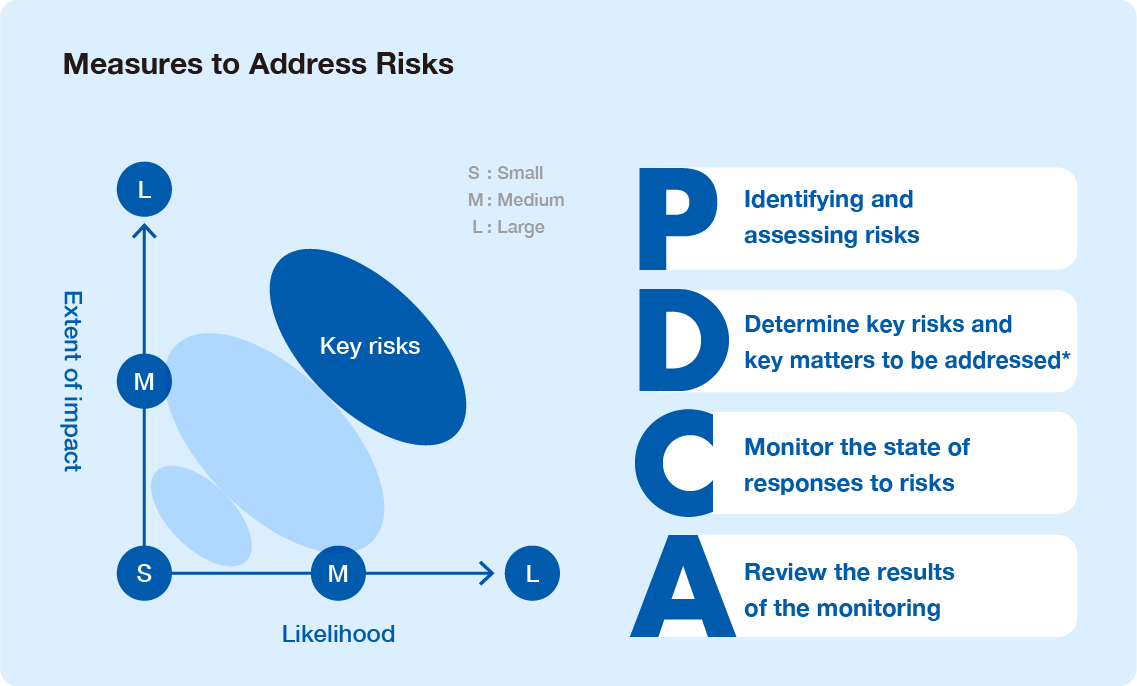Risk Management
Approach to Risk management
The Group enacted Risk Management Regulations for the purpose of contributing to the stable corporate growth of the TAMRON Group through risk management that implements measures for preventing or systematically mitigating risks over the short, medium, and long terms, and established a Risk Management Committee that makes decisions and deliberates on basic matters and policies regarding the promotion of risk management. We have established the Risk Management Review Committee as a body subordinate to the Risk Management Committee. Its roles are to identify risks within the Group and to study preventive or mitigation measures to address these risks that may have a major impact on the Group or cause it to incur significant damage. Through these activities, we understand the changes in the external environment and the status of response measures within the Group to review these measures and improve their effectiveness.
In 2024, we identified 11 key risks. We determined five key matters to be addressed that are specified below. For each key matter, a leader was appointed to carry out response measures to address the risks in collaboration with related organizations. The Risk Management Committee reviews the state of the progress of these measures at the meeting it holds each year so that measures are corrected and modified as needed.
Key matters to be addressed
- Improve governance
- Strengthen information security
- Enhance the response to geopolitical risks
- Strengthen the sustainable supply chain
- Improve BCP
*Key matters to be addressed… Matters that need to be address by the whole company (e.g. through cross-departmental actions and support for resources) in view of their increasing impact or likelihood, the progress of response actions and other factors
Risk Management System

Business Continuity Planning (BCP) Initiatives
TAMRON has established “Emergency response regulations,” “basic business continuity plan” and other rules to minimize damage and ensure business continuity and an early recovery from key risks such as major earthquakes, and is continuously improving its risk management system.
Disaster Response Headquarters Training
In recent years, experts have predicted the possibility of a major earthquake occurring in Japan. At Tamron, one of our key risk management priorities is the enhancement of our Business Continuance Plan (BCP), to ensure we are prepared to respond effectively to uncertain situations.
Recognizing that training is as vital as everyday preparedness, Tamron’s headquarters regularly conducts emergency response drills, based on a scenario in which a large-scale disaster strikes the Tokyo metropolitan area. The Disaster Response Headquarters, led by the head and supported by senior executives, carries out scenario-based training, starting with damage assessment, ensuring that the team can make accurate judgement and decisions, even under the chaotic conditions following a disaster.

Target・Result
| Key CSR Issues | 2024 targets | 2024 results |
|---|---|---|
| Strengthening business continuity management (BCM) | Conduct company-wide training | Company-wide training conducted |

